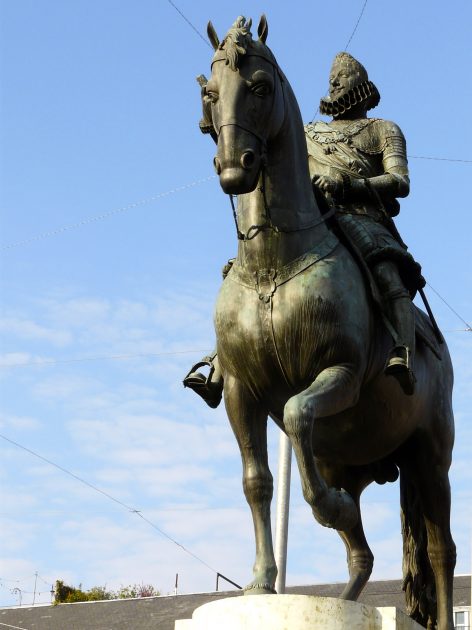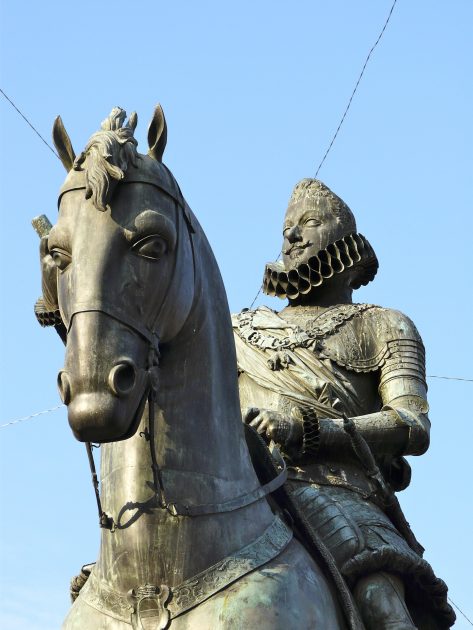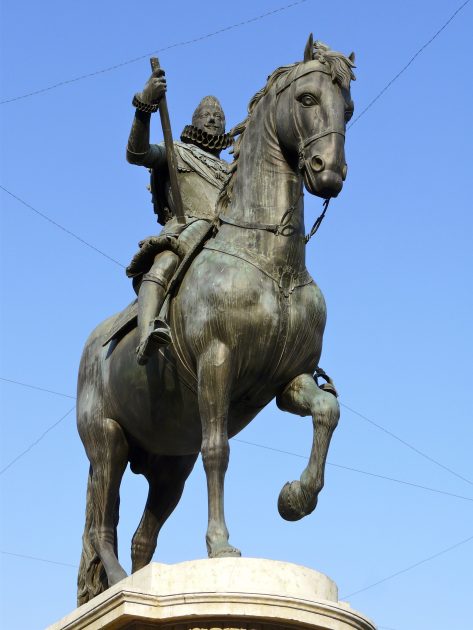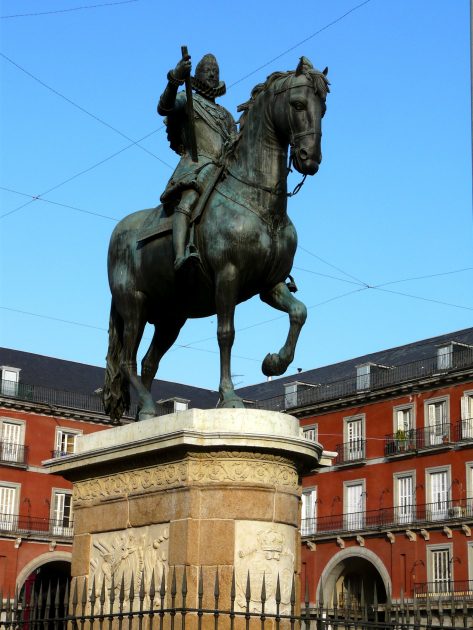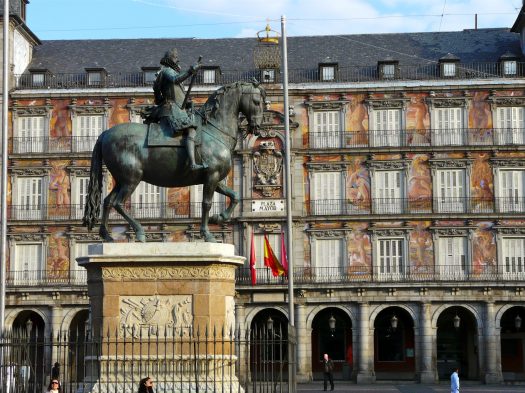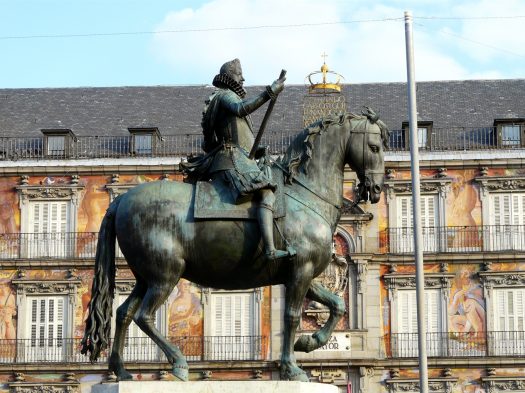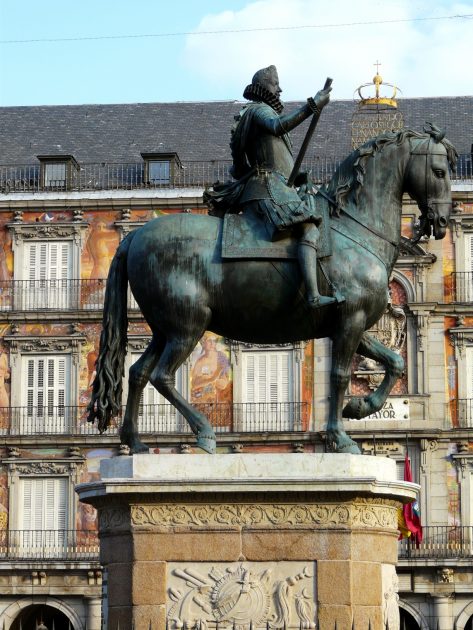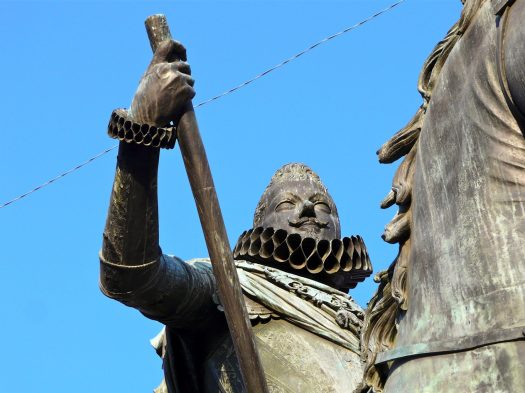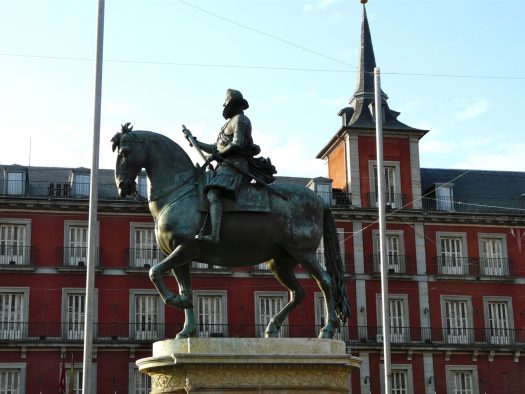In 1616, the Grand Duke of Florence presented the statue of King Philip III, riding his stallion triumphantly. Giambologna designed and sculpted the statue and his pupil Pietro Tacca finished it. It stood in the Casa de Campo until 1848, until it was moved to the Plaza Mayor in the centre of the Madrid, where nowadays it is often at the centre of demonstrations that are held there.
This attractive statue, which can be favourably compared with the Cosimo I statue by the same sculptor in Florence, narrowly escaped destruction. It is an interesting story. During the early stages of the Franco dictatorship in Spain, many of the relics and statues with connections to the old Spanish royal family were destroyed. The statue of Philip III was no exception and was toppled from its pedestal. As the bronze statue smashed onto the stones of the Plaza Mayor, hundreds of small bones tumbled out of its hollow innards. The sheer number of tiny bones instantly took the vandals aback. They thought it was some kind of superstitious guardian of the monument, let out by the smashing of the statue. The bones were later identified as the skeletons of sparrows, but why they had been collected in the statue remained a mystery until the statue was repaired after the Franco dictatorship. It was found that the birds had been entering the statue through a small hole, but the way out was much tighter. So the poor birds starved to death inside the monument.
